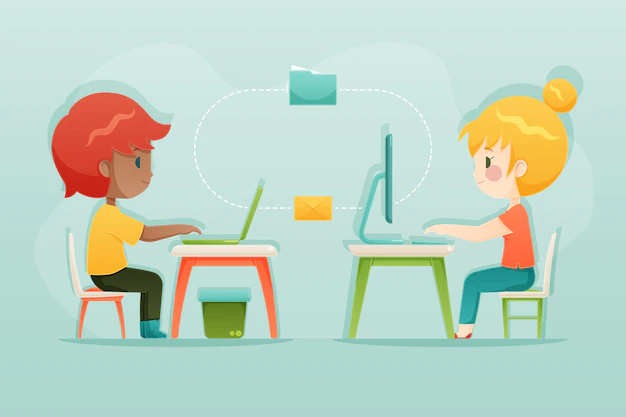Learning With Gamification: The Top Ways To Relive it

Did you know about learning with gamification? I disagree with how learning is now conducted in corporations. Learning experts are capable of so much more! Many people, like me, want to study so that we can change with the times. However, it depends on who you ask and how it should change.
With the support of my knowledge in these fields, I try to construct my response—my vision of how learning might change with the aid of gamification and data. There are various ways in which gaming and learning intersect; the top 5 ways that gamification and games might help us reinvent learning are as follows.
Also read LMS Gamification: The Truth You Should Know
Being Social
You probably already know that playing games with friends are far more enjoyable than playing by yourself. Playing video games with pals helps you stay responsible and in control of your development—sometimes you carry them and sometimes they carry you. When your interest in the game starts to wane, friends encourage you to return. With their expertise, you happen to understand a lot more about the game’s setting.
Could we envision learning in a similar way at work? There are numerous difficulties that one may consider. However, creating games for learning would undoubtedly help with the social systems that have been present in them. Learning won’t be laborious, and many people could manage with assistance from their friends.
Transparency and Orientation
With the exception of a few sandboxes and exploratory games, the majority of the games contain explicit and detailed quests and objectives. To accomplish that objective, complete that level, or defeat the monster and an endless supply of minions, we play either individually or in teams.
Even though there may be a lot of things to accomplish, we generally understand the game’s starting, middle, and endgame goals as we play. In this method, level designers are able to engage players, retain them in the game’s universe, and maintain their interest over the duration of the game—even if it takes more than 50 hours to complete.
Do you believe that many employees in the company are aware of the start, middle, and finish points of the learning they are doing? Are the tasks and objectives for them even remotely present? We are currently living in a reality where learning without comprehending the final goal just doesn’t make sense to me.
Quickness and Agility
Gaming enthusiasts have a special talent known as “pushing,” which allows them to finish a challenging task and advance swiftly in an incredibly unexpected amount of time. Pushing typically occurs after a session of grinding, which is essentially doing the menial tasks in video games.
Gamers may perform various real-life chores with incredible speed and agility by using grind and push in conjunction with the feedback loop that is present in the majority of games.
Could learning tools and content be created to support the struggle and pressure of in-person training? Fast development can sometimes be a real motivator for learning. Of course, effective feedback loops are necessary for this to work.
Systems of Mentoring and Support
Gaming communities understand the positive-sum nature of games, which makes them generally more helpful than any other online community. Professionals who have spent a lot of time in a particular game world will spend their time mentoring and supporting a novice in that game world (exceptions do exist).
In games, there are guilds and parties that aid in fostering a sense of community among players and within the game environment.
A diary, quest book, or library in a game usually instructs the player on everything that serves a purpose in the game world and maintains them updated on their progress if there isn’t a social aspect for the experts to mentor the novices.
Is it possible to create mentorship and support networks for our learning activities in a way that motivates both novices and specialists to offer assistance and advice? Human fears and the perception that this process is zero-sum certainly provide obstacles, but in the grand scheme of things, everyone benefits.
With Meaning and Belonging
Games are excellent at tying players to their overarching story. Whether it’s getting over personal grief, learning more about history, or even picking up a new language. Games aid in helping you eventually discover why you are playing.
Players continue to play until they find their purpose, at which point they move on to another. One of the main reasons why games function is because of the surroundings that gameworlds have developed for the players to feel comfortable and have a sense of belonging.
Is it possible to make sure that learning enables the learner to connect with their larger narratives? helps them realize their goals and fulfill their true desires. Is there a way we can approach education so that it aids students in comprehending and resolving challenges they encounter in the real world? Nothing will serve as a better motivator than this.
Along with a variety of additional mechanisms from the game industry, these 5 aspects through content and systemic gamification could help transform the way we learn in the workplace. Having said that, there are many different ways to play a game. In this world, there are many different kinds of people, each with their own goals and motivations. Everyone is experiencing life at a different stage, and their paths are as varied as they can be. Different genres of video games, films, music, etc. exist for a reason.
Data use becomes more important in this situation. We could use classic data science to examine categorization models that can suggest themes, subjects, skills, and media that will help us succeed in the job in the short and long term.
These guidelines may become the determinants of who we are and what those who think and act as we do. This could provide us with more clarity and direction for our educational activities.
Exposure to learning analytics will help individuals and teams grow and improve their job with their performance. It would also help them create realistic goals. They would become quick and agile learners as a result, which would benefit both the individuals and the organization. Building a good feedback loop for learners and numerous learning initiatives would undoubtedly benefit from learning analytics.
Modern data science may assist students in anticipating how they will succeed both academically and professionally. These forecasts would enable the students to improve their study and work methods over time to perform at greater levels.
With a sense of ease, we hadn’t before imagined, this might enable us to push the limits of learning and professional performance. Wouldn’t it be ideal if everyone could develop their own formula for attaining peak performance in the classroom and at work?






